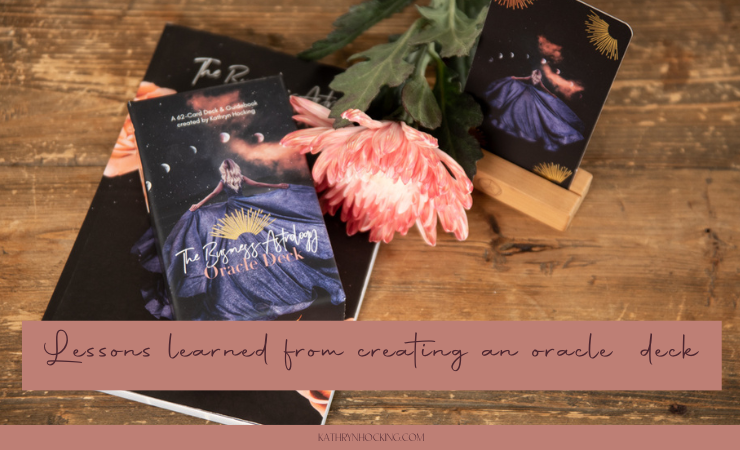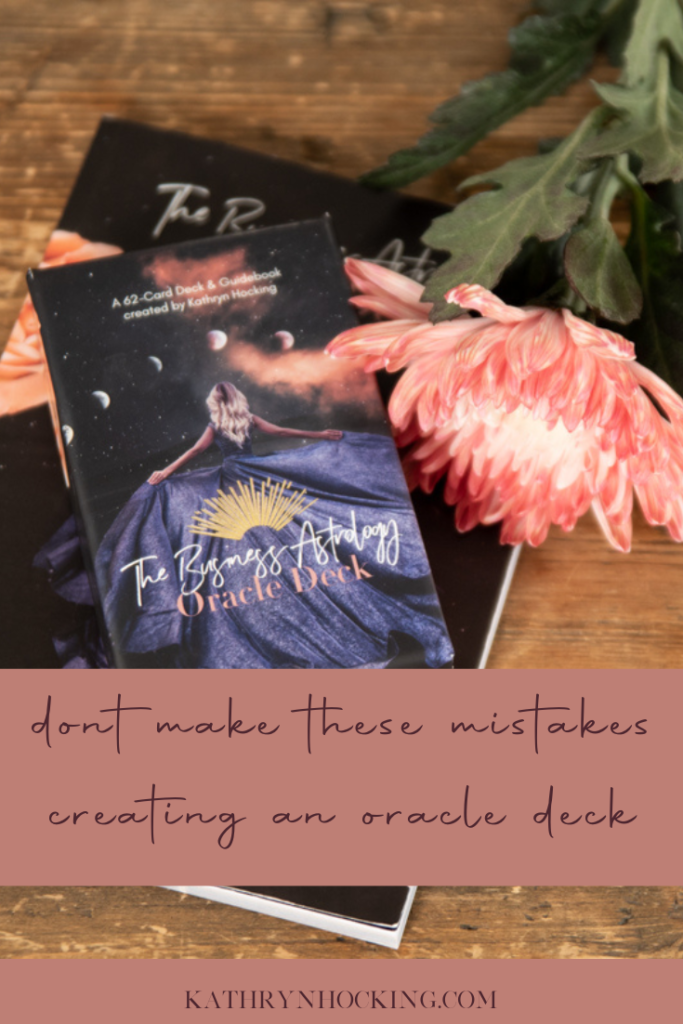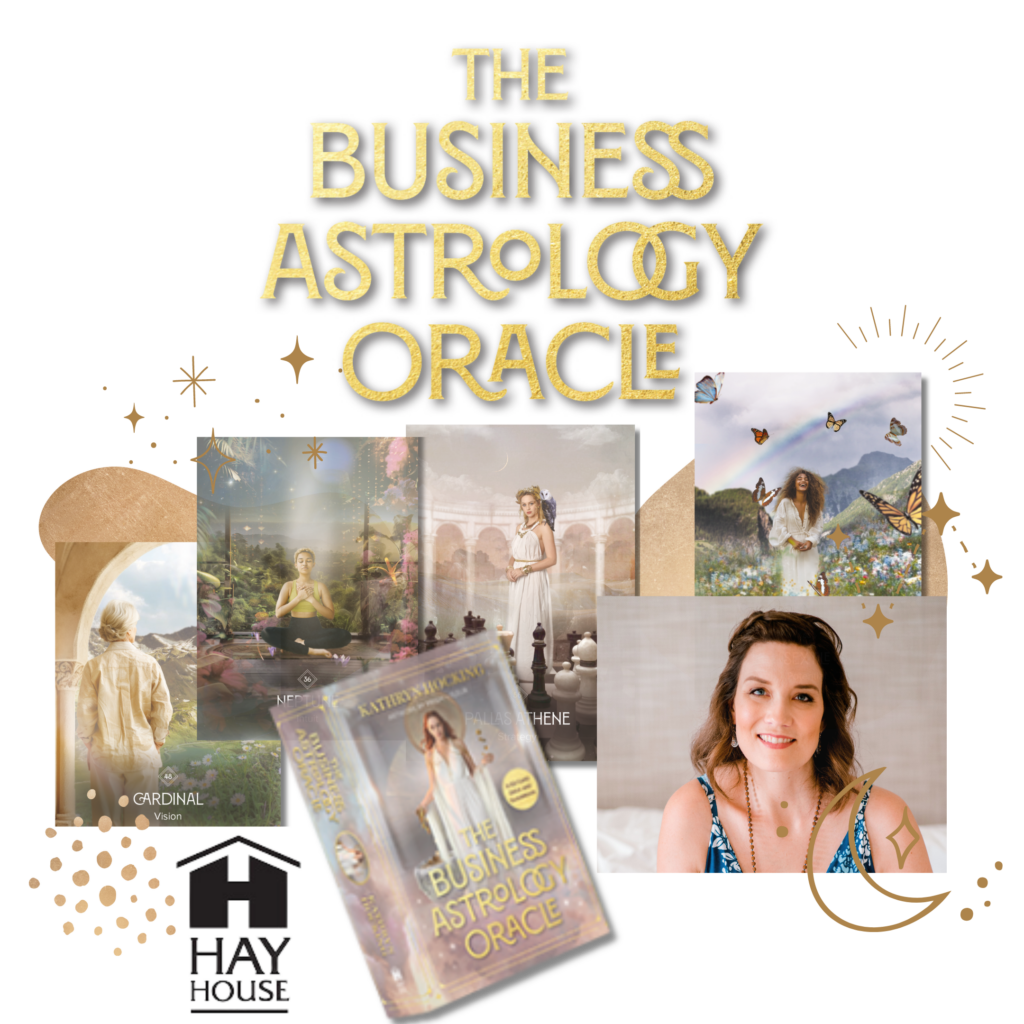
In previous blogs, I’ve written about creating my oracle deck and then launching an oracle deck. In this blog, I’d love to share a few key lessons from creating an oracle deck before I move on to other projects in my business.
So as I wrote this we have sold 96 decks with 28% upgrading to the Business Astrology Toolkit. My goal is to sell 100 decks in this first launch and I feel really excited that we are so close to hitting this milestone.

My Lessons from Creating an Oracle Deck
1. Stick to the plan and go the distance
It can be easy to feel like the only people who will buy have bought in the early stages of a launch but here is the current breakdown
| Launch Segment | Decks Sold |
| Certification Students | 18 |
| VIP early-notification list | 46 |
| Early-Bird (general promotion to the entire list) | 28 |
| Full-Price | 4 |
It would have been SO easy to assume that only people who joined the VIP list would purchase but in fact, 29% of the sales came from people on my list who didn’t join the VIP list.
I’ll share some more in-depth data on conversions from the various strategies in a future blog.
2. Upgrades are essential
If you look at the costs to publish a quality deck in small quantities versus the price that the market will accept then it becomes pretty clear that to achieve a significant profit you need to include upgrades that are more leveraged and/or lower cost.
I’ll give you a breakdown of the cost to produce my oracle deck and any profit or loss in a future blog but I’m so glad I included the upgrade as 28% of people took me up on this option and it significantly increased my overall revenue.
3. Shipping can get you in trouble
I ended up having to price shipping not having received the final packaging and I had to estimate weight. I found a similar size box but there is still some unknown.
Also, I ended up using two rates only – domestic and international, however, some international destinations can be up to $20 more expensive to send to.
I easily could have ended up making a loss on shipping costs and next time I launch I will look at a service or integration that calculates the exact shipping cost for each destination.
Overall I think I’m ahead by about $20 on shipping – not really ahead once you consider the materials to ship like bubble wrap and satchels.
4. Plan for some upfront investment
To pull off a project like this to a high level you will want to have at least 2-5K to invest in the following before you get any sales:
- If you are not designing the cards yourself you’ll need to invest in Illustrations or design of the deck (this could easily cost up to $10k)
- Web Design for the sales page
- Quality professional photos of the deck
- Graphic design of the packaging
- Demo stock
4. Don’t expect a profit the first time you launch
I messaged my good friend Denise Duffield-Thomas a few weeks ago because I knew she’d understand this lesson as she self-published multiple books before getting a publisher.
I said to her “It’s so much effort and investment for a relatively low profit but I feel a massive sense of achievement anyway”.
Her response was:
“exactly – it’s a long-term asset that won’t go out of date – amazing for brand recognition”
I have not run the final numbers yet as it will depend on quantities ordered but there were a lot of capital costs including graphic design, web design, and photography which will mean that there is not a direct profit in this first launch.
However, I will (mentally) spread these investments across three or four launches or they will be what help me get a publishing deal.
With a product like a book or an oracle deck, it is not always about massive profit – it is about positioning yourself as an expert in your field and selling into other offerings over time.
It’s absolutely a longer-term strategy and I’ll be using some of the leftover funds (note I’m not calling it profit at this stage!) to buy extra decks to use as gifts for new certification rounds or client gifts.
5. Luxe Packaging is expensive!
It’s expensive to self-publish using the best materials including velvet stock and gold foiling at this level of quantities.
Next time I’d consider just creating a larger box with an insert to hold the cards and book on top to reduce the direct costs. This time I ended up with a small tarot-size box that sits in a larger box to fit the oversized (A5) book – but this increased the product price by 25%. I don’t regret this as it will be amazing but I may not do it next time.
6. You must order demo stock
You need to order demo stock before ordering large quantities for a couple of reasons.
Firstly you don’t want to find a mistake in your design once you have ordered large quantities. You might need to go through multiple demo iterations before you iron out all the issues.
I realised that I needed thumbholes in the boxes, that the book cover didn’t quite work when printed and I needed to test that the larger box properly fits the tarot-sized deck and book.
Demo stock is also really important as mentioned earlier in order to calculate shipping.
7. Order additional demo stock upfront
Next time I launch I’ll order about 10 demo decks to send out to influential entrepreneurs in the hopes that they might write a testimonial or endorsement.
I’ve already been approached by a MAJOR oracle deck creator with the potential to be promoted to their community but they wanted me to send them a review demo deck which I didn’t have. Luckily we have found a way around this but it was absolutely a lesson for me.
8. Assume costs for lower-than-expected quantities
OK so here’s the thing you need to cost your product not knowing how many you will sell and the price per deck varies depending on quantities.
So unless you have the capital to order a set minimum quantity you could find yourself making a loss if expected quantities are lower.
I’ll be honest I was thinking I might sell 200-250 decks but I did cost and pricing modeling for 100, 150, 200 and 250 decks.
It looks like I’ll sell between 100-125 and then order an additional 30 decks for other promotional needs and client gifts.
If I had priced based on 250 decks and only sold 100 I’d likely have made a loss.
The typical conversion rates apply for oracle decks – between 1-2% of your active list.
Want more?
I hope you have enjoyed my lessons from creating an oracle deck. In a future blog, I’ll dish on all the results of this first launch!
My deck has been picked up by Hay House – pre-order here

